Traditional Uzbek clothing
Uzbek clothing and its history
Walking through the streets of Uzbekistan, especially outside Tashkent’s central areas, you’ll be captivated by the vibrant and colorful traditional Uzbek clothing worn by people of all ages.
These distinct garments reflect centuries of cultural exchange, as Uzbekistan’s history is deeply intertwined with neighboring civilizations along the legendary Silk Road. For over 2,000 years, Uzbek fashion has evolved, incorporating unique symbols and religious significance into its designs. Different styles of Uzbek clothing can be seen during our Uzbekistan Tours and Central Asia Tours.
The Influence of the Silk Road on Uzbek Fashion
Ancient frescoes, terracotta figurines, miniature paintings, and historical records from Silk Road travelers provide fascinating insights into the evolution of Uzbek traditional dress. Archaeological discoveries reveal that weaving and textile production were highly advanced in this region even two millennia ago. Luxurious silk kaftans were worn by wealthy citizens, while the working class dressed in simpler cotton garments.
In the Fergana Valley, remarkable textile artifacts have been unearthed, such as long silk dresses with finely stitched hems and decorative slits—garments that women once paired with waistbands or scarves. Girls’ dresses were shorter, adorned with floral embroidery, while boys wore thigh-length silk shirts with straight collars.
The Evolution of Uzbek Textiles and Symbolism
During the Middle Ages, Uzbekistan became renowned for its textile craftsmanship, with artisans producing exquisite gold brocade, striped cotton fabrics, and silk garments. Historical miniature paintings from this period depict how clothing reflected a person’s social, religious, and marital status. Striped fabrics, for example, were commonly worn by the lower-income population, while nobility and merchants preferred elaborate woven designs.
Today, Uzbek traditional attire remains a proud symbol of the country’s rich heritage. From the intricate patterns of ikat fabric to the delicate embroidery of suzani textiles, the legacy of Uzbek craftsmanship continues to inspire fashion and textile lovers worldwide.
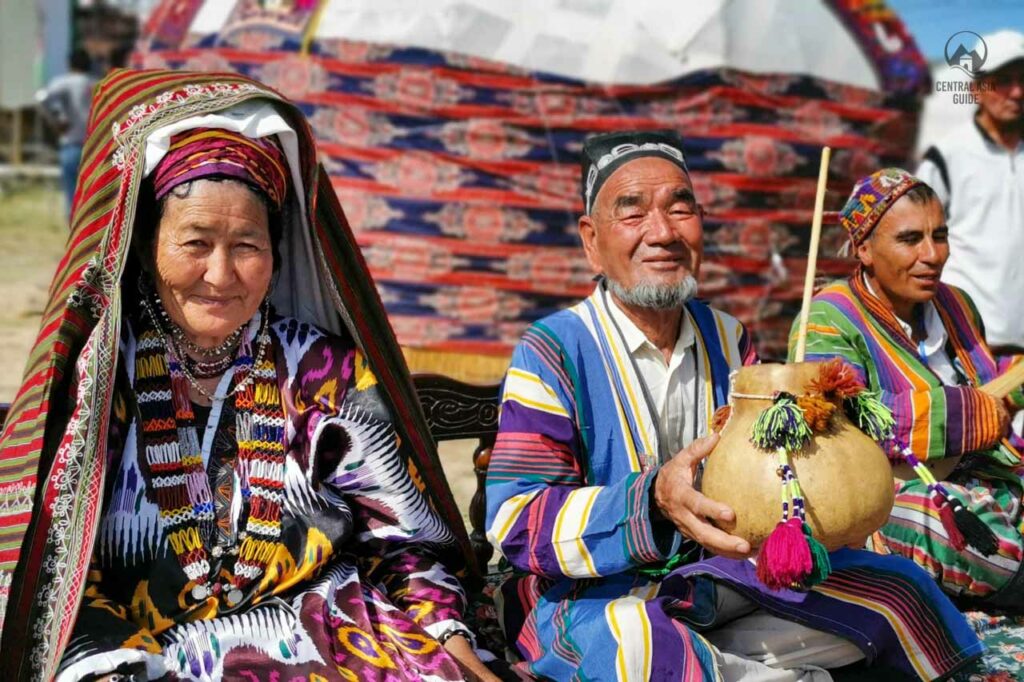
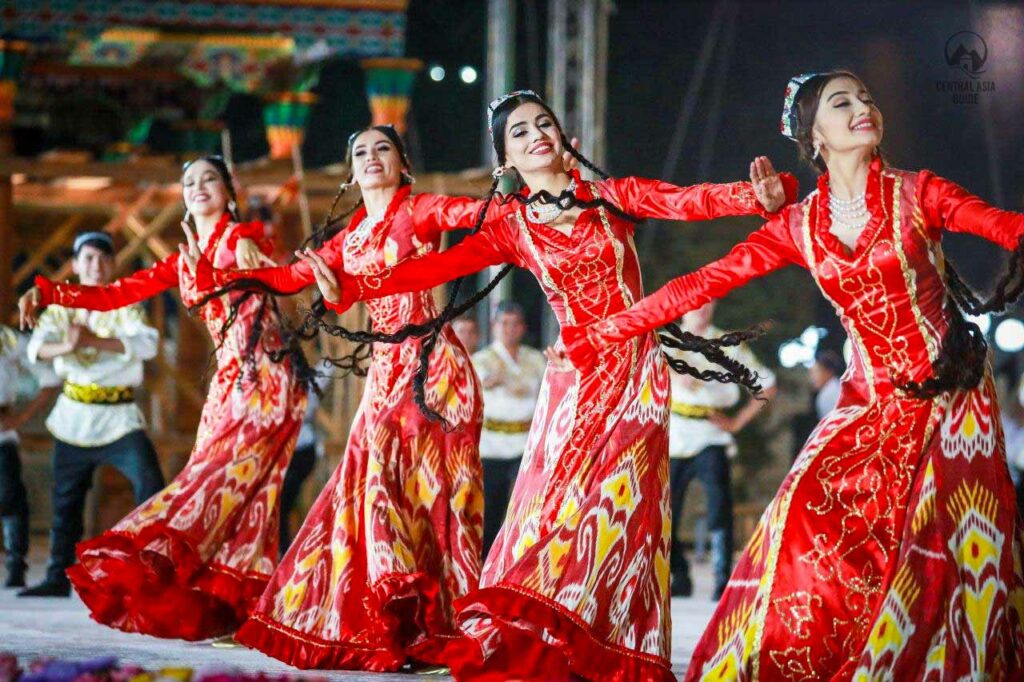
Traditional Uzbek Clothing
Traditional Uzbek clothing is a vibrant reflection of the country’s rich history, deeply rooted in Silk Road influences and centuries-old craftsmanship. Whether for men or women, Uzbek attire is known for its bright colors, intricate embroidery, and symbolic designs, each carrying cultural and spiritual significance.
For Uzbek men, the most striking garment is the chapan, a long-sleeved, knee-length coat often made with striped fabric. The edges, neckline, and sleeve cuffs are adorned with decorative braids, which were believed to ward off evil spirits. For holidays and special occasions,
Uzbek women wear luxurious satin dresses, richly embroidered with golden thread. These intricate patterns are more than just decoration—they hold magical and protective meanings. For example, geometric embroidery patterns were believed to serve as amulets, shielding the wearer from harm.
For Uzbek women, traditional dress consists of a khan-atlas tunic-dress paired with wide trousers, offering both comfort and elegance. Festive clothing is typically made from satin fabric and richly embroidered with golden thread, showcasing the wearer’s status and craftsmanship. Uzbek women also wear a three-piece headdress, including a skullcap, kerchief, and turban, adding to their graceful appearance. Jewelry is an essential part of Uzbek women’s fashion, with gold and silver earrings, bracelets, and necklaces serving both aesthetic and protective functions. Historically, geometric embroidery patterns on clothing were believed to act as amulets, offering spiritual protection. Additionally, dark colors like black or dark blue were rarely worn due to superstitious beliefs, with bright and vibrant hues symbolizing happiness, fertility, and good fortune.
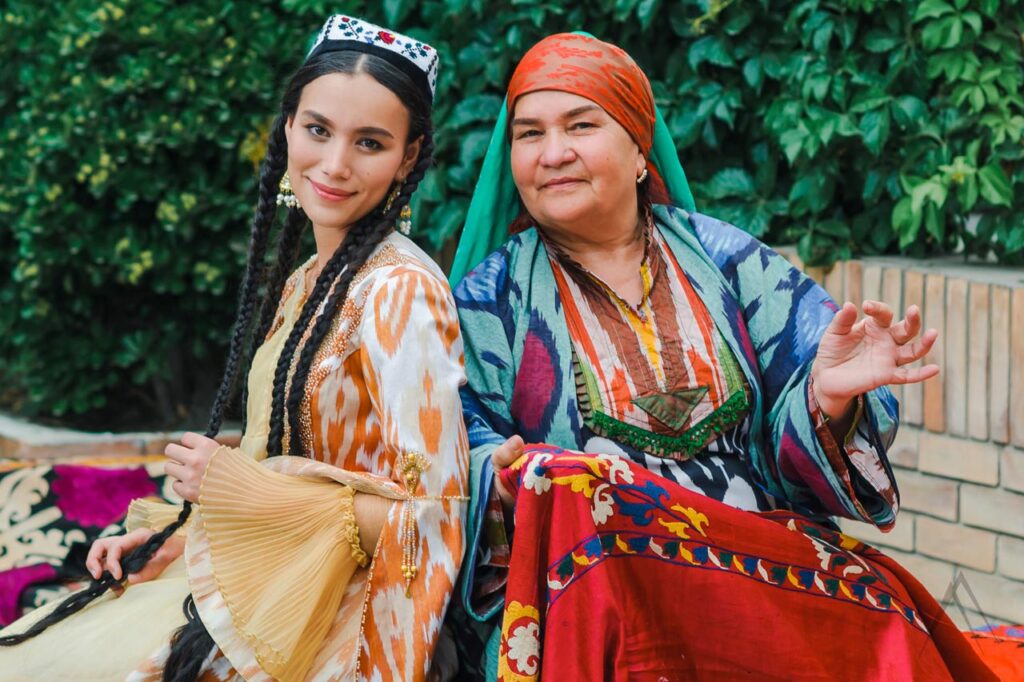
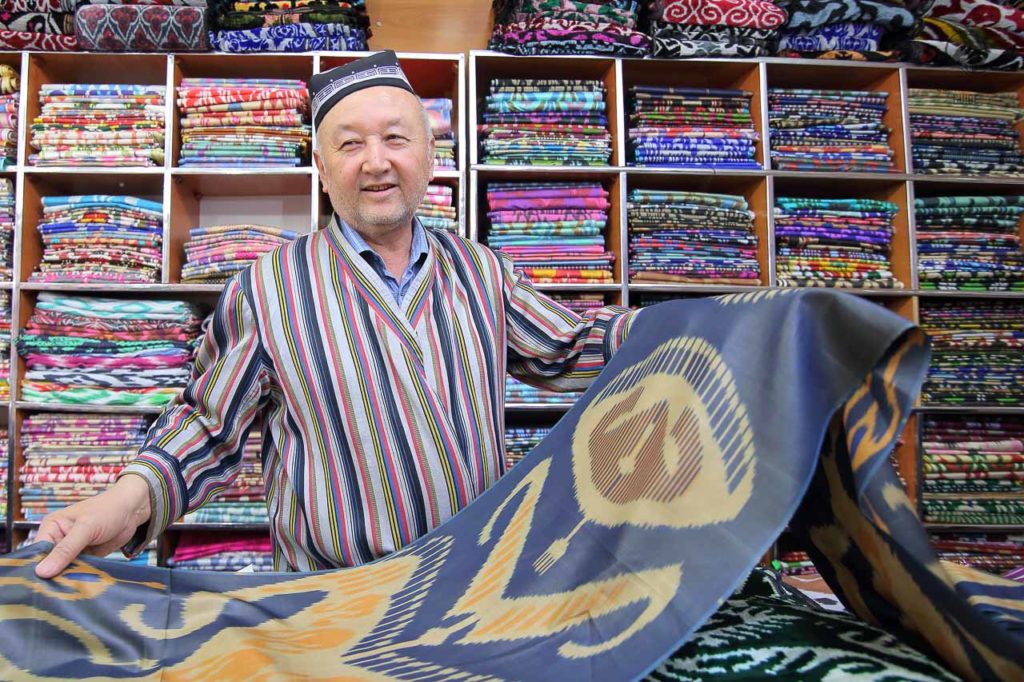
The Uzbek Skullcap Doppi / Tubyeteika
The skullcap, known as tubeteika in Russian, is a widely recognized form of traditional headwear in Central Asia, especially in Uzbekistan. This iconic cap, an essential part of Uzbek national clothing, originates from the Turkic word “tube’”, meaning “top” or “peak.” Worn by men, women, and children, it is only elderly women who typically forgo this traditional accessory.
In Uzbekistan, the tubeteika is locally known as doppi (or duppi) and is crafted from velvet or wool, often embroidered with silk or silver threads. These handmade skullcaps feature intricate floral and geometric motifs, carrying both ethnic and religious significance. A classic men’s doppi is traditionally black, adorned with white embroidered patterns—typically four stylized “paprika” designs surrounded by 16 miniature arches.
Each doppi design reflects a specific Uzbek region, making it possible to determine a wearer’s origins simply by observing the pattern. Even today, in Uzbekistan’s Fergana Valley, it is common to see elderly men riding bicycles while proudly wearing their doppi—a living testament to the country’s rich cultural heritage. Whether worn for everyday use or special occasions, the Uzbek skullcap remains a powerful symbol of identity, tradition, and craftsmanship—a legacy of Central Asian culture that continues to thrive.
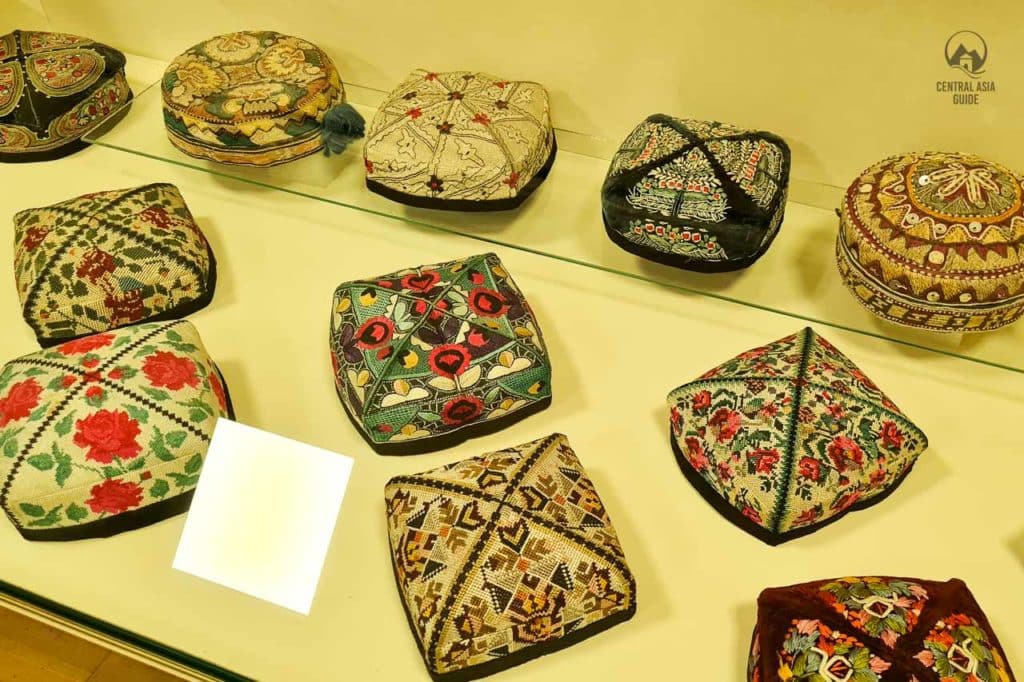
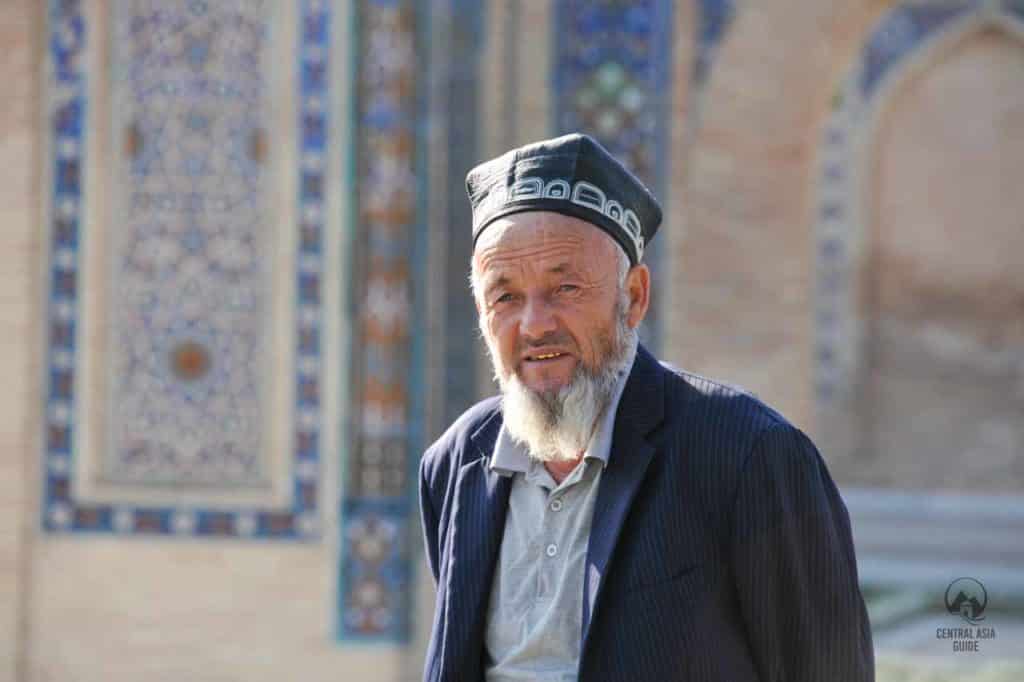
Uzbek Chapan
The chapan is one of the most distinctive elements of traditional Uzbek clothing, worn by men across Uzbekistan (and elsewhere in Central Asia) for centuries.
This long-sleeved, knee-length (or longer) coat is made from fabric featuring vibrant, multicolored stripes, reflecting the rich textile heritage of Central Asia.
The edges, hem, neckline, and sleeve cuffs of the chapan are adorned with decorative braids, traditionally believed to protect the wearer from evil spirits. The chapan is a wrap-around coat, secured at the waist with a sash, offering both comfort and elegance.

Historically, wearing multiple chapans at once—even in summer—was a sign of wealth, social prestige, and family prosperity. The more layers a man wore, the higher his status in society. Today, the Uzbek chapan remains an important symbol of heritage and identity, frequently worn during weddings, cultural ceremonies, and national celebrations.
Whether for practical use or as a cultural statement, the chapan continues to be a cherished element of Uzbek traditional attire, embodying both history and craftsmanship.
Uzbek women's dress
Traditional Uzbek women’s set consists of plain khan-atlas tunic-dress and wide trousers. Holiday clothes are normally made of satin fabric and are richly embroidered with golden thread. Women’s headdress consist of three elements: a skull cap, kerchief and turban. The main part of traditional holiday garments of Uzbek women are golden and silver jewelry consisting of earrings, bracelets and necklaces.
The embroidery patterns of Uzbek women were never chosen by chance, it always had a magical meaning or a practical function. For instance, repeating geometrical patterns on the braiding was something like an amulet and clothing of black or dark blue colors was not popular in any region of Uzbekistan due to superstition.
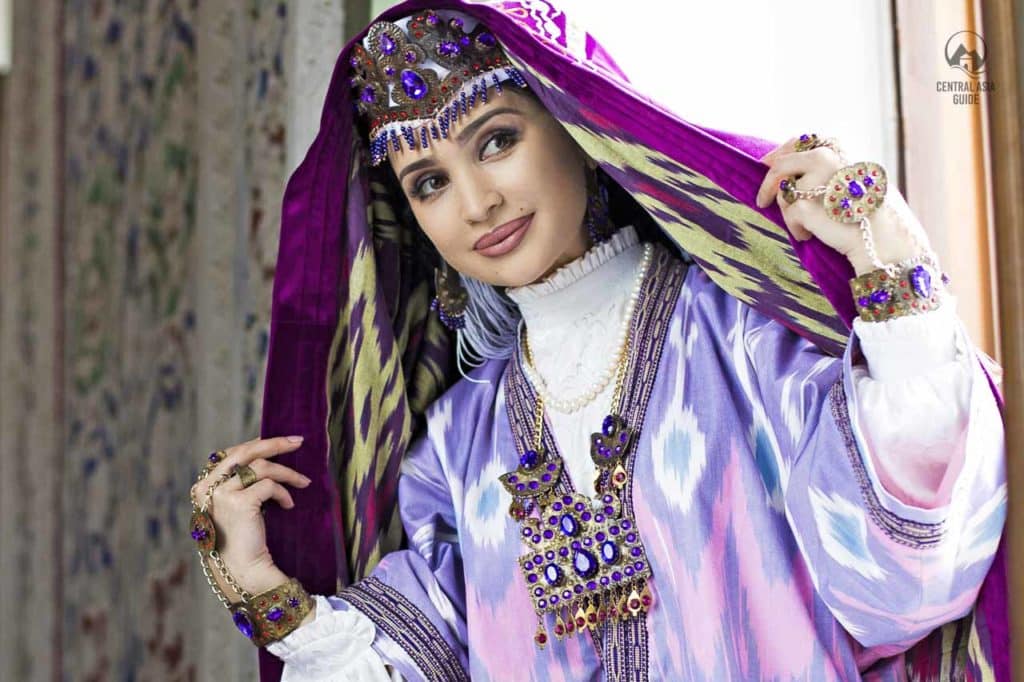
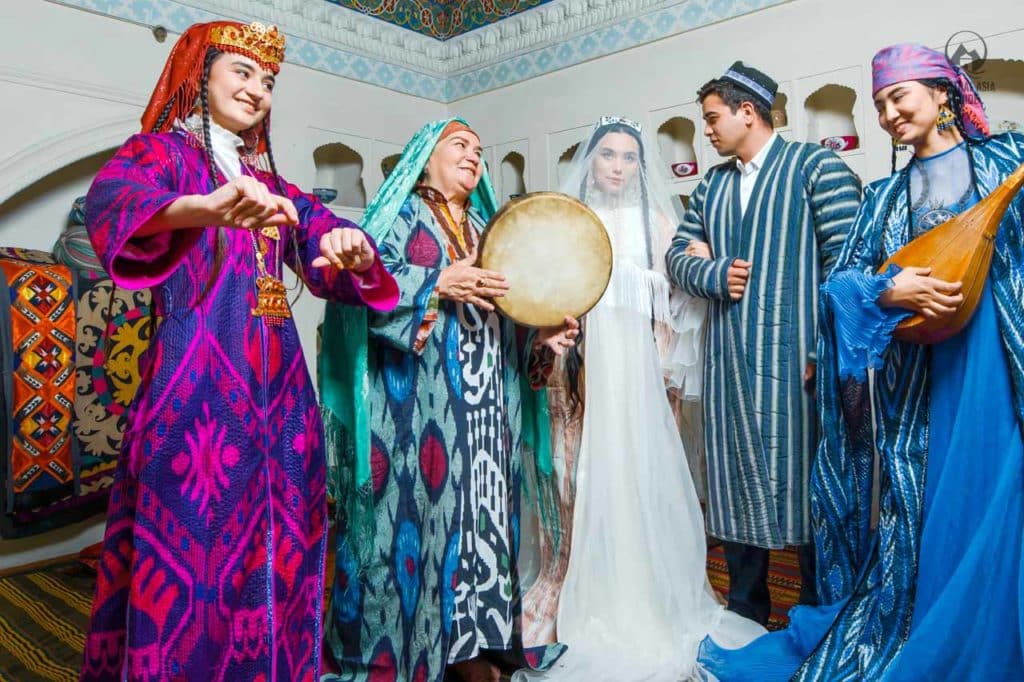
Uzbek clothes as souvenirs
Uzbek clothes are one of the best souvenirs one can buy while traveling in Uzbekistan & Central Asia. They are easily available in all major cities and especially in Bukhara, Samarkand and Khiva. The best priced Uzbek clothes are nearby their production sites in Fergana Valley and cities like Margilan. There are also more modern versions available but created with the same old and well proven techniques used in the region for ages.
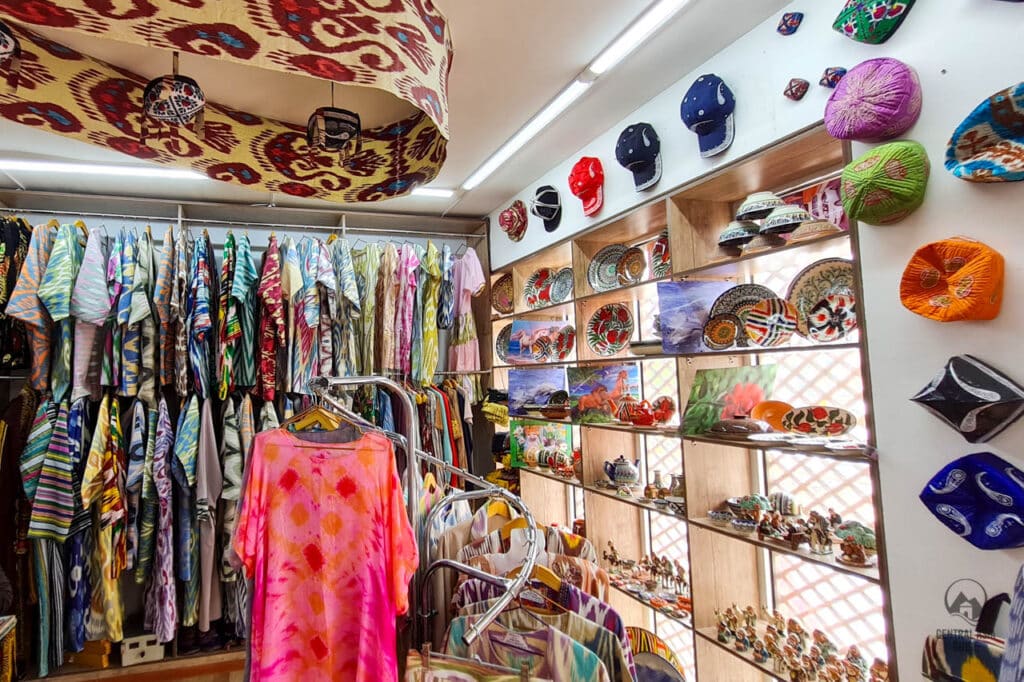
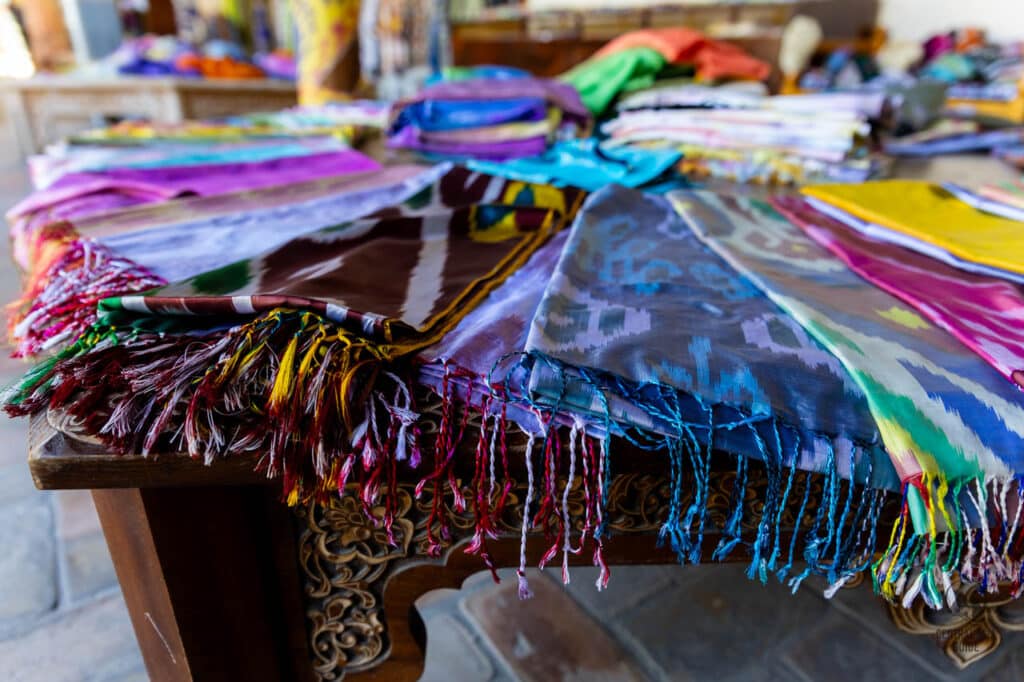
More about Uzbek culture
Page updated 10.6.2025